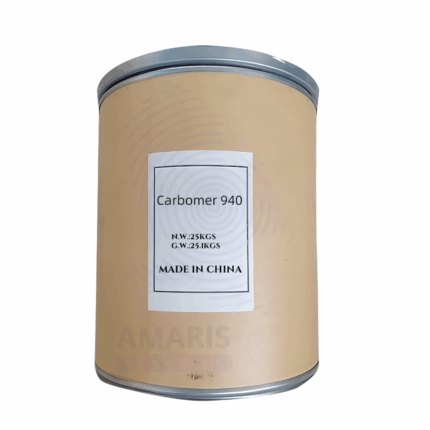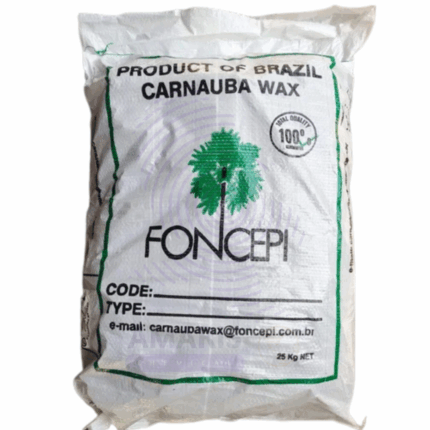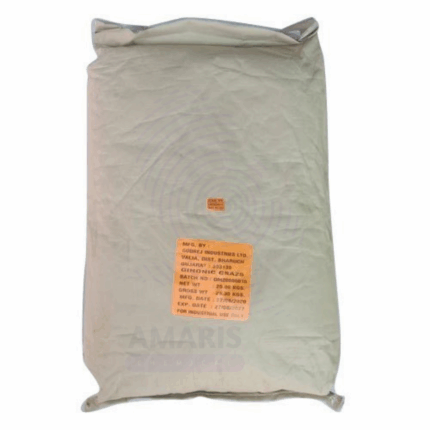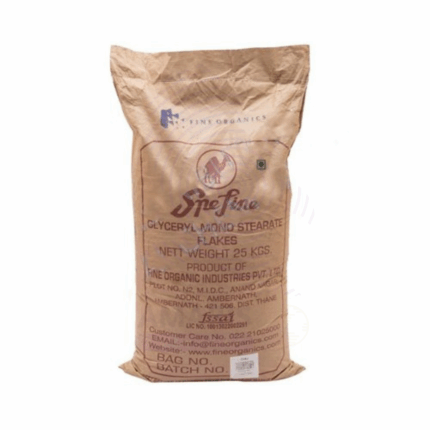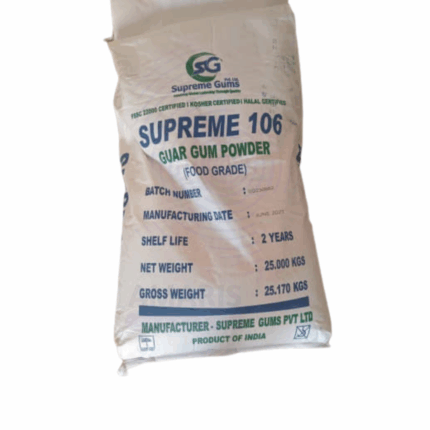“Carnauba Wax” has been added to your cart. View cart
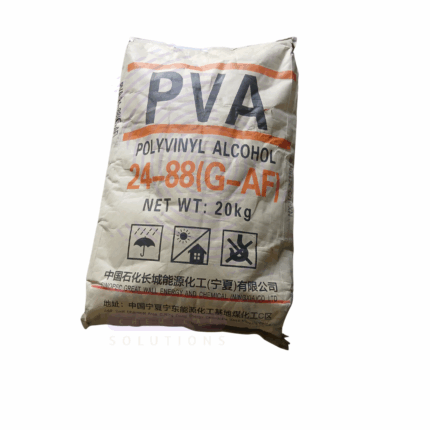
Polyvinyl Alcohol
$ 2.20 Original price was: $ 2.20.$ 2.14Current price is: $ 2.14.
Beeswax
Whatsapp Order
Beeswax is a natural wax produced by honeybees of the genus Apis. It is secreted by worker bees from specialized glands and used to build honeycomb cells. Beeswax is a complex mixture of esters, fatty acids, and hydrocarbons, characterized by a pale yellow to brown color, a pleasant honey-like aroma, and a firm yet pliable texture. It has excellent emulsifying, binding, and protective properties, making it widely used in cosmetics, pharmaceuticals, food, and industrial applications. Beeswax is prized for its natural origin, biodegradability, and skin-friendly characteristics.
Description
Table of Contents
Toggle
Primary Uses
- Cosmetics & Personal Care:
Used extensively in lip balms, lotions, creams, and ointments for its moisturizing, thickening, and protective qualities. Acts as an emulsifier and stabilizer in formulations. - Pharmaceuticals:
Utilized as a base or excipient in ointments, salves, and topical medications. Provides controlled release properties and improves texture. - Food Industry:
Employed as a glazing agent or coating for candies, chocolates, and fruits to prevent moisture loss and improve appearance. Also used in food-grade packaging coatings. - Candle Making:
Traditional material for high-quality, slow-burning, clean-burning candles with natural scent. - Polishes & Lubricants:
Used in shoe polishes, furniture waxes, and car waxes for protective coatings and shine enhancement. - Beekeeping & Agriculture:
Applied in making foundation sheets for beehives and protective coatings for horticultural products.
Secondary Uses
- Arts & Crafts:
Used in encaustic painting (wax painting) and modeling due to its malleability and texture. - Pharmaceutical Capsules:
Incorporated as a coating material for capsules and tablets. - Waterproofing:
Used in leather and fabric waterproofing treatments. - Textile Industry:
Utilized as a sizing agent in yarn processing and finishing. - Dental Industry:
Occasionally used in dental molds and impressions due to its pliability and biocompatibility.
PRODUCT KEY FEATURES
- Basic Identification Attributes
- Chemical Name (IUPAC): Mixture of esters of fatty acids and long-chain alcohols
- Common/Trade Name: Beeswax
- CAS Number: 8012-89-3
- HS Code: 1521.00.00
- Molecular Formula: Complex mixture; main components include C15–C36 hydrocarbons, esters, and acids
- Synonyms: Cera Alba, Honey wax
- Physical & Chemical Properties
- Physical State: Solid wax at room temperature
- Color & Odor: Pale yellow to brown; characteristic mild honey aroma
- Melting Point: 62–65°C
- Density: ~0.958 g/cm³
- Solubility: Insoluble in water; soluble in organic solvents like ether, chloroform, and benzene
- Texture: Firm but pliable, slightly tacky to touch
- Flash Point: Approximately 204°C
- Stability: Stable under normal conditions, prone to oxidation with prolonged exposure to air/light
- Safety & Hazard Attributes
- Hazard Class (GHS): Not classified as hazardous
- NFPA Ratings: Health 0, Flammability 2, Reactivity 0
- Exposure Limits: No specific occupational exposure limits; non-toxic
- Reactivity: Chemically stable; avoid strong oxidizing agents and high heat
- Incompatibilities: Strong oxidizers, prolonged exposure to UV light
- Storage & Handling Attributes
- Storage Conditions: Store in a cool, dry, well-ventilated area away from direct sunlight and heat sources
- Container Type: Sealed containers, preferably airtight to prevent contamination and oxidation
- Shelf Life: Several years if stored properly
- Special Handling: Avoid inhalation of fumes when melting; use appropriate protective gloves to avoid burns
- Regulatory & Compliance Attributes
- Regulatory Status: Generally recognized as safe (GRAS) by FDA for food use
- Transportation: Not classified as hazardous material
- Waste Disposal: Dispose of according to local regulations; biodegradable and environmentally friendly
- Environmental & Health Impact
- Ecotoxicity: Low toxicity; biodegradable and environmentally safe
- Persistence: Biodegradable over time in natural conditions
- Carcinogenicity/Mutagenicity: No evidence of carcinogenic or mutagenic effects
- Biodegradability: Readily biodegradable
SAFETY HANDLING PRECAUTIONS
-
Safety Handling Precautions
- PPE: Use gloves and safety glasses when handling hot beeswax to prevent burns.
- Ventilation: Ensure adequate ventilation when melting beeswax to avoid inhaling vapors.
- Fire Safety: Beeswax is flammable; keep away from open flames and heat sources. Have fire extinguishing media ready (foam or dry chemical).
- Handling: Avoid prolonged skin contact with molten wax to prevent burns.
- Hygiene: Wash hands after handling; avoid ingestion or inhalation of fumes.
First Aid Measures
- Inhalation: Move to fresh air if vapors are inhaled; seek medical attention if respiratory symptoms occur.
- Skin Contact: Cool affected area with cold water if burned by hot wax; seek medical treatment for severe burns.
- Eye Contact: Rinse eyes with water thoroughly; seek medical attention if irritation persists.
- Ingestion: Unlikely route; rinse mouth and seek medical advice if swallowed in significant quantities.
Firefighting Measures
- Fire Hazards: Beeswax is combustible and can catch fire from open flames or sparks.
- Extinguishing Media: Use foam, dry chemical powder, or CO₂ extinguishers. Avoid water jets which may spread burning wax.
- Special Precautions: Firefighters should wear protective gear and breathing apparatus in case of smoke inhalation risk.
- Preventive Actions: Store away from ignition sources; avoid accumulation of wax dust to reduce fire hazard.
Related products
Candelilla Wax
Candelilla Wax is a natural vegetable wax derived from the leaves of the Euphorbia cerifera shrub, native to northern Mexico and the southwestern United States. It appears as a hard, brittle, light yellow to brown wax with a mild, characteristic odor. This wax is valued for its high melting point, gloss-enhancing properties, and excellent binding capabilities. It is widely used in cosmetics, pharmaceuticals, food, and industrial applications as a vegan alternative to beeswax. Its film-forming, emollient, and stabilizing attributes make it a multifunctional ingredient across several industries.
Carbomer
Carbomer is a high molecular weight, crosslinked polyacrylic acid polymer used primarily as a rheology modifier, thickening agent, and suspension stabilizer. Supplied as a fluffy white powder, it exhibits high viscosity and excellent clarity when neutralized and dispersed in water or alcohol-water systems. Carbomer 940 is widely valued for its ability to form clear gels, control flow properties, and stabilize emulsions. It is commonly used in cosmetics, personal care, pharmaceuticals, and household formulations due to its consistency, compatibility, and efficient thickening performance at low concentrations.
Carnauba Wax
Carnauba Wax is a natural vegetable wax obtained from the leaves of the Copernicia prunifera palm tree, native to northeastern Brazil. It appears as a hard, brittle, yellow to brownish-yellow wax with a faint, characteristic odor. Known as the “queen of waxes,” Carnauba Wax is prized for its exceptionally high melting point, glossy finish, and excellent hardness. It is a premium wax widely used in cosmetics, food, pharmaceuticals, automotive, and industrial applications as a natural, biodegradable alternative to synthetic waxes. Its film-forming, emulsifying, and protective properties make it highly versatile for use in coatings, polishes, and skincare products.
Ceteareth 20 Ginonic CSA 20
Ceteareth 20 Ginonic CSA 20 is a nonionic surfactant and emulsifier derived from the ethoxylation of cetearyl alcohol, incorporating approximately 20 ethylene oxide units per molecule. It appears as a white to off-white waxy solid or viscous liquid, depending on temperature and formulation. This emulsifier is widely used in cosmetic, pharmaceutical, and industrial formulations for its excellent ability to stabilize oil-in-water emulsions, improve texture, and enhance the sensory properties of finished products. Its high hydrophilic-lipophilic balance (HLB) makes it especially effective in forming stable emulsions and solubilizing lipophilic ingredients in aqueous phases. Ceteareth 20 is valued for its mildness, broad compatibility, and multifunctional performance.
Glycerol Monostearate Flakes
Glycerol Monostearate Flakes is a white to off-white waxy flake form emulsifier composed of 40% monoglycerides of fatty acids, primarily stearic and palmitic acids, combined with other glycerides and esters. Derived mainly from vegetable oils, this food-grade emulsifier is widely utilized in food, cosmetic, pharmaceutical, and industrial sectors for its multifunctional properties. GMS 40% flakes serve as effective emulsifiers, stabilizers, anti-caking agents, and texture enhancers, with excellent compatibility and versatility in formulations requiring semi-solid or solid fats.
Guar Gum
Guar Gum is a natural polysaccharide extracted from the endosperm of the guar bean (Cyamopsis tetragonoloba). It appears as an off-white to cream-colored powder with a neutral odor and bland taste. Guar Gum is a galactomannan composed mainly of mannose and galactose units, known for its excellent water-binding, thickening, and stabilizing properties. It forms highly viscous solutions even at low concentrations, making it a versatile hydrocolloid used widely across food, pharmaceutical, cosmetic, oilfield, and industrial applications.
HPMC Vivapharm
HPMC Vivapharm is a high-quality, pharmaceutical-grade hydroxypropyl methylcellulose polymer widely used as an excipient and functional ingredient. It appears as a fine, white to off-white, odorless powder with excellent solubility in cold water and forms clear, viscous solutions. This cellulose ether derivative offers excellent film-forming, thickening, emulsifying, and controlled-release properties. Vivapharm E50 is prized in pharmaceutical, food, and cosmetic industries for its versatility, stability, and safety profile.
Hycryl
Hycryl is a specialized acrylic copolymer resin designed primarily for industrial and cosmetic applications. It appears as a white to off-white powder or granules with excellent film-forming, adhesive, and thickening properties. Known for its compatibility with a wide range of solvents and plasticizers, Hycryl 77 provides excellent clarity, flexibility, and durability in coatings, adhesives, and personal care formulations. Its balanced molecular weight and functional groups enable it to deliver strong binding and aesthetic properties in both aqueous and solvent-based systems.


 Preservatives(food)
Preservatives(food) Flavor Enhancers
Flavor Enhancers Acidulants
Acidulants Sweeteners
Sweeteners Antioxidants
Antioxidants Colorants(food)
Colorants(food) Nutraceutical Ingredients (food)
Nutraceutical Ingredients (food) Nutrient Supplements
Nutrient Supplements Emulsifiers
Emulsifiers
 Collectors
Collectors Dust Suppressants
Dust Suppressants Explosives and Blasting Agents
Explosives and Blasting Agents Flocculants and Coagulants
Flocculants and Coagulants Frothers
Frothers Leaching Agents
Leaching Agents pH Modifiers
pH Modifiers Precious Metal Extraction Agents
Precious Metal Extraction Agents
 Antioxidants(plastic)
Antioxidants(plastic) Colorants (Pigments, Dyes)
Colorants (Pigments, Dyes) Fillers and Reinforcements
Fillers and Reinforcements Flame Retardants
Flame Retardants Monomers
Monomers Plasticizers
Plasticizers Polymerization Initiators
Polymerization Initiators Stabilizers (UV, Heat)
Stabilizers (UV, Heat)
 Antifoaming Agents
Antifoaming Agents Chelating Agents
Chelating Agents Coagulants and Flocculants
Coagulants and Flocculants Corrosion Inhibitors
Corrosion Inhibitors Disinfectants and Biocides
Disinfectants and Biocides Oxidizing Agents
Oxidizing Agents pH Adjusters
pH Adjusters Scale Inhibitors( water)
Scale Inhibitors( water)
 Antioxidants(cosmetic)
Antioxidants(cosmetic) Emollients
Emollients Fragrances and Essential Oils
Fragrances and Essential Oils Humectants
Humectants Preservatives
Preservatives Surfactants(cosmetic)
Surfactants(cosmetic) Thickeners
Thickeners UV Filters
UV Filters
 Fertilizers
Fertilizers Soil Conditioners
Soil Conditioners Plant Growth Regulators
Plant Growth Regulators Animal Feed Additives
Animal Feed Additives Biostimulants
Biostimulants Pesticides (Herbicides, Insecticides, Fungicides)
Pesticides (Herbicides, Insecticides, Fungicides)
 Active Pharmaceutical Ingredients (APIs)
Active Pharmaceutical Ingredients (APIs) Excipients
Excipients Solvents(pharmaceutical)
Solvents(pharmaceutical) Antibiotics
Antibiotics Antiseptics and Disinfectants
Antiseptics and Disinfectants Vaccine Adjuvants
Vaccine Adjuvants Nutraceutical Ingredients (pharmaceutical)
Nutraceutical Ingredients (pharmaceutical) Analgesics & Antipyretics
Analgesics & Antipyretics
 Analytical Reagents
Analytical Reagents Solvents(lab)
Solvents(lab) Chromatography Chemicals
Chromatography Chemicals Spectroscopy Reagents
Spectroscopy Reagents microbiology-and-cell-culture-reagents
microbiology-and-cell-culture-reagents Molecular Biology Reagents
Molecular Biology Reagents Biochemical Reagents
Biochemical Reagents Inorganic and Organic Standards
Inorganic and Organic Standards Laboratory Safety Chemicals
Laboratory Safety Chemicals Specialty Laboratory Chemicals(Special Laboratory Equipment)
Specialty Laboratory Chemicals(Special Laboratory Equipment)
 Demulsifiers
Demulsifiers Hydraulic Fracturing Fluids
Hydraulic Fracturing Fluids Scale Inhibitors(oil)
Scale Inhibitors(oil) Surfactants(oil)
Surfactants(oil) Drilling Fluids
Drilling Fluids
 Dyes and Pigments
Dyes and Pigments Bleaching Agents
Bleaching Agents Softening Agents
Softening Agents Finishing Agents
Finishing Agents Antistatic Agents
Antistatic Agents
 Admixtures
Admixtures Waterproofing Agents
Waterproofing Agents Sealants and Adhesives
Sealants and Adhesives Curing Compounds
Curing Compounds Concrete Repair Chemicals
Concrete Repair Chemicals Anti-Corrosion Coatings
Anti-Corrosion Coatings
 Surfactants(cleaning)
Surfactants(cleaning) Builders
Builders Enzymes
Enzymes Solvents (Cleaning)
Solvents (Cleaning) Fragrances
Fragrances
 Electronic Chemicals
Electronic Chemicals Catalysts
Catalysts Lubricants
Lubricants Photographic Chemicals
Photographic Chemicals Refrigerants
Refrigerants Automotive chemicals
Automotive chemicals Pyrotechnic Chemicals
Pyrotechnic Chemicals
 Biodegradable Surfactants
Biodegradable Surfactants Bio-based Solvents
Bio-based Solvents Renewable Polymers
Renewable Polymers Carbon Capture Chemicals
Carbon Capture Chemicals Wastewater Treatment Chemicals
Wastewater Treatment Chemicals
 Pigments
Pigments Solvents(paint)
Solvents(paint) Specialty Coatings
Specialty Coatings Binders/Resins
Binders/Resins Additives
Additives Driers
Driers Anti-Corrosion Agents
Anti-Corrosion Agents Functional Coatings
Functional Coatings Application-Specific Coatings
Application-Specific Coatings
 Fresh Herbs
Fresh Herbs Ground Spices
Ground Spices Whole Spices
Whole Spices Spice Blends
Spice Blends Dried Herbs
Dried Herbs
 Leavening Agents
Leavening Agents Dough Conditioners
Dough Conditioners Flour Treatments
Flour Treatments Fat Replacers
Fat Replacers Decoratives
Decoratives Preservatives(baking)
Preservatives(baking)
 Plasticizers & Softeners
Plasticizers & Softeners Reinforcing Agents
Reinforcing Agents Adhesion Promoters
Adhesion Promoters Vulcanizing Agents
Vulcanizing Agents Antidegradants
Antidegradants Blowing Agents
Blowing Agents Fillers & Extenders
Fillers & Extenders Accelerators & Retarders
Accelerators & Retarders





